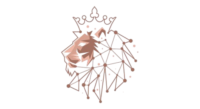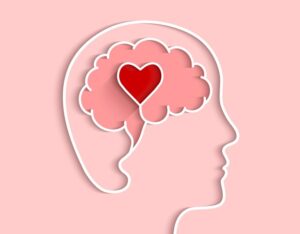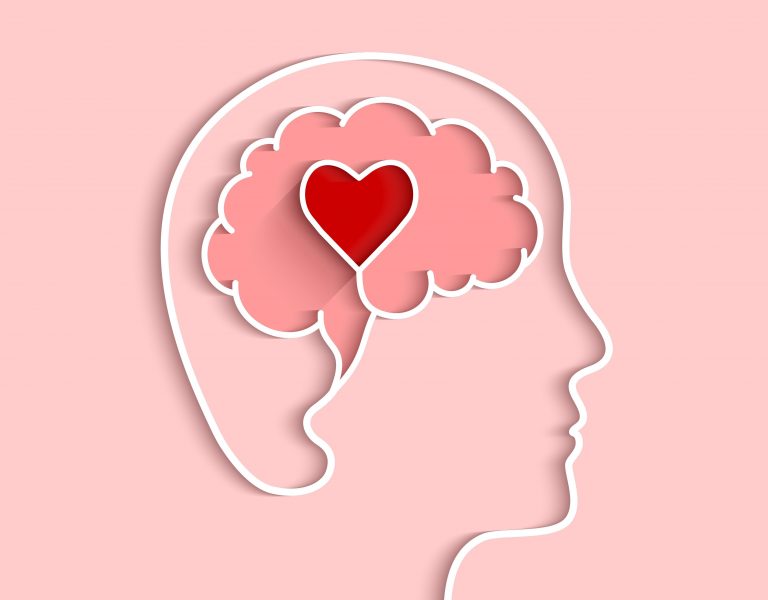Introduction
Chronic Kidney Disease (CKD) symptoms often go unnoticed in the early stages, earning it the title of a “silent killer.” By the time noticeable CKD symptoms emerge, significant kidney damage may have already occurred. This article explores CKD symptoms, kidney functions, the differences between acute renal failure and CKD, and proactive measures for early detection to help prevent irreversible harm.

What Exactly Do Kidneys Do?
The kidneys are essential organs that filter blood, remove waste products, and maintain a stable balance of salts and other substances in the blood. They also regulate blood pressure and produce hormones important for red blood cell production and calcium metabolism.
To know more about your kidneys and how they work visit: NIH.
The Vital Functions of the Kidneys
The kidneys are essential organs performing several critical roles:
- Filtering Waste: They remove waste products and excess fluids from the blood, excreting them as urine.
- Regulating Electrolytes: Kidneys balance essential minerals like sodium, potassium, and calcium, which are crucial for muscle and nerve function.
- Blood Pressure Regulation: They control blood pressure by managing fluid volumes and releasing hormones that influence blood vessel tension.
- Bone Health Support: By activating vitamin D, kidneys facilitate calcium absorption, which is vital for bone strength.
- Red Blood Cell Production: They secrete erythropoietin, a hormone that stimulates red blood cell production in the bone marrow.
Given these diverse functions, impaired kidney performance can adversely affect overall health.
Understanding Acute Renal Failure (ARF)
Acute Renal Failure (ARF), also known as Acute Kidney Injury (AKI), is characterized by a sudden decline in kidney function over hours or days. Common triggers include severe dehydration, infections, or trauma. ARF is often reversible with prompt treatment, allowing kidneys to regain normal function. However, untreated or recurrent AKI can lead to permanent kidney damage, increasing the risk of developing CKD.
Read more by visiting Mayo Clinic.

What is Chronic Kidney Disease (CKD)?
Chronic Kidney Disease is a progressive condition marked by the gradual loss of kidney function over time. Unlike ARF, CKD develops slowly, and the resulting kidney damage is typically irreversible. The disease progresses through five stages, from mild kidney impairment (Stage 1) to end-stage renal disease (Stage 5), where dialysis or a kidney transplant becomes necessary for survival.
CKD disrupts the body’s ability to filter waste, balance fluids, regulate blood pressure, and produce essential hormones, leading to complications across multiple bodily systems.
Read more about CKD on NIH.
The Asymptomatic Nature of CKD: A Hidden Danger
One of the most perilous aspects of CKD is its lack of symptoms in the early stages. Individuals often remain unaware of the disease until kidney function is significantly compromised.
The kidneys’ adaptability allows them to continue filtering waste even when damaged, delaying noticeable symptoms. Consequently, signs like fatigue, swelling, or changes in urination typically appear only after substantial kidney damage has occurred, making early detection challenging yet crucial.

My CKD Journey: Missed Symptoms and a Late Diagnosis
In my case, there were even more layers to this silence. I was born with Albinism, a rare genetic condition that affects the skin, hair, and eyes. Albinism can also affect the internal organs, and in my case, doctors later predicted that I had been born with one kidney that was already shrunken. This was likely a contributing factor to my CKD, though we didn’t realize it until much later.
Albinism is a genetic condition caused by mutations that affect melanin production. Melanin is the pigment that gives color to the skin, eyes, and hair, but it also plays a role in the development and function of various organs. People with albinism may have other congenital abnormalities, including issues with their kidneys. In my case, it meant I was likely born with reduced kidney function from the start, which set me on the path to CKD.
This underlying condition, combined with other factors, went unnoticed for years. My CKD didn’t appear until it was too late. I had recurring fevers starting in 2007, but since it was “just a fever,” we didn’t suspect anything serious. We consulted our family doctor, and without doing any tests to figure out the kind of infection I had, he gave me strong antibiotics. These doses were very high, and I remember having the flu and fever simultaneously two or three times during this period. Every time, the doctor prescribed higher doses of antibiotics, which further damaged my kidneys.
I also had a history of severe headaches since childhood, but no one ever imagined it could be due to hypertension (high blood pressure). We assumed the headaches were linked to my weak eyesight, as I had vision problems growing up. The excruciating headaches I went through might have been an early warning sign of high blood pressure affecting my kidneys, but we missed it.
Had the doctor suggested a simple blood test like a CBC (Complete Blood Count) or a KFT (Kidney Function Test) in the earlier stages, or if we had even considered checking my blood pressure when I was younger, there’s a chance my story could have been very different today.
To read about my medical journey click here

How Albinism Can Contribute to CKD
Albinism is a genetic disorder that affects melanin production, but in some cases, it can be associated with structural abnormalities in organs, including the kidneys. Certain genetic mutations linked to albinism may also impact kidney development, leading to:
- Congenital kidney defects (such as a shrunken kidney, as in my case)
- Higher susceptibility to infections, which can harm the kidneys over time
- Possible metabolic changes that may increase the risk of CKD
Since this connection is not widely known, albino children should undergo routine kidney function tests from an early age.
To read more about albinism visit Mayo Clinic

Recognizing Subtle CKD Symptoms
Despite CKD being asymptomatic in its initial phases, some subtle signs can indicate a problem. These include:
- Changes in urine output (frequency, color, or consistency)
- Fatigue and weakness, as waste builds up in the bloodstream.
- Swollen ankles, feet, or hands, caused by fluid retention.
- Changes in urination, such as foamy urine, increased frequency (especially at night), or a significant reduction in output.
- Loss of appetite, nausea, and unintentional weight loss.
- Itchy skin due to waste accumulation in the blood.
- High blood pressure can damage the kidneys and be a result of CKD.
These symptoms often overlap with other conditions, making it easy to overlook their connection to kidney function. If you experience any of these symptoms, it’s essential to consult a healthcare professional for evaluation.

Proactive Measures for Early Detection of CKD
Since CKD is often asymptomatic, proactive steps are necessary for early detection:
Monitor Risk Factors
- Diabetes and Hypertension – The two leading causes of CKD
- Family History – If close relatives have kidney disease, regular screening is essential
- Chronic Infections or Autoimmune Diseases – Conditions like lupus can harm the kidneys
Routine Health Screenings
Regular testing can catch CKD early:
- Kidney Function Test (KFT): A blood test that measures how well your kidneys filter blood. It also checks creatinine and blood urea nitrogen (BUN) levels.
- Complete Blood Count (CBC): This is also a blood test that assesses your overall health and detects a variety of disorders, such as anemia and infection.
- Blood Pressure Monitoring: Regular checks can identify hypertension, a major risk factor for CKD.
- Urinalysis – Detects protein leakage or blood in the urine
- Glomerular Filtration Rate (GFR) – Measures overall kidney function
Lifestyle Changes to Reduce CKD Risk
Preventing chronic kidney disease involves adopting a healthy lifestyle and managing risk factors. Here are some tips to maintain kidney health:
- Stay Hydrated: Drink plenty of water to help your kidneys function optimally.
- Eat a Balanced Diet: Focus on fruits, vegetables, whole grains, and lean proteins. Limit salt and processed foods.
- Monitor Blood Pressure and Blood Sugar Levels: Keep these within normal ranges to reduce the risk of kidney damage.
- Avoid Excessive Use of Over-the-Counter Medications: Certain pain relievers can harm your kidneys, so use them sparingly. NSAIDs like ibuprofen can damage the kidneys over time
- Get Regular Check-Ups: Regular visits to your healthcare provider for kidney function tests can help catch issues early.
- Exercise regularly: Helps regulate blood pressure and overall health.

Conclusion: Don’t Wait for CKD Symptoms—Act Early!
Chronic Kidney Disease remains one of the most underdiagnosed conditions due to its asymptomatic nature. My personal experience highlights how unnoticed symptoms, misdiagnosed conditions, and lack of proper testing can delay CKD diagnosis, leading to irreversible damage.
Regular health check-ups, early screenings, and awareness of subtle symptoms can save lives. If you or someone you know has risk factors—such as a history of high blood pressure, diabetes, or congenital conditions like albinism—prioritizing kidney function tests and blood pressure monitoring could make all the difference.
Your kidneys work silently to keep you healthy—don’t wait until it’s too late to listen to them!
To read about how i navigated dialysis after my diagnosis and to know what to do if you are diagnosed with CKD click here.
If you found this article helpful, please share your thoughts or experiences in the comments below. Don’t hesitate to reach out if you have questions or topics you’d like me to cover in future posts. Together, we can raise awareness about CKD and support each other in our journeys







7 thoughts on “Chronic Kidney Disease: The Silent Threat—10 Essential Warning Signs You Shouldn’t Ignore. CKD symptoms, causes and prevention”
This is all very nicely structured, informative and really a preventive eye opening action towards screening. I will definitely use this is a live example in my presentations.
It was really my pleasure to know that my article can help you. Do let me know whenever you mention this in ur presentations i wud love to see. Thanku so much. Plz share with the ones who might need it.
May Allah bless you with success, good health, and abundant khair.
Truly appreciate your kind words!
Aameen and jazakAllah khair. Happy reading.
Very well said, couldn’t find this much detailed information anywhere. Thanks for this. Hope you get better soon.
Your most welcome. Really means alot. Keep reading more to come in future in sha Allah. Share with the ones who might need it. Thanks
A good read, thank you for sharing such knowledge